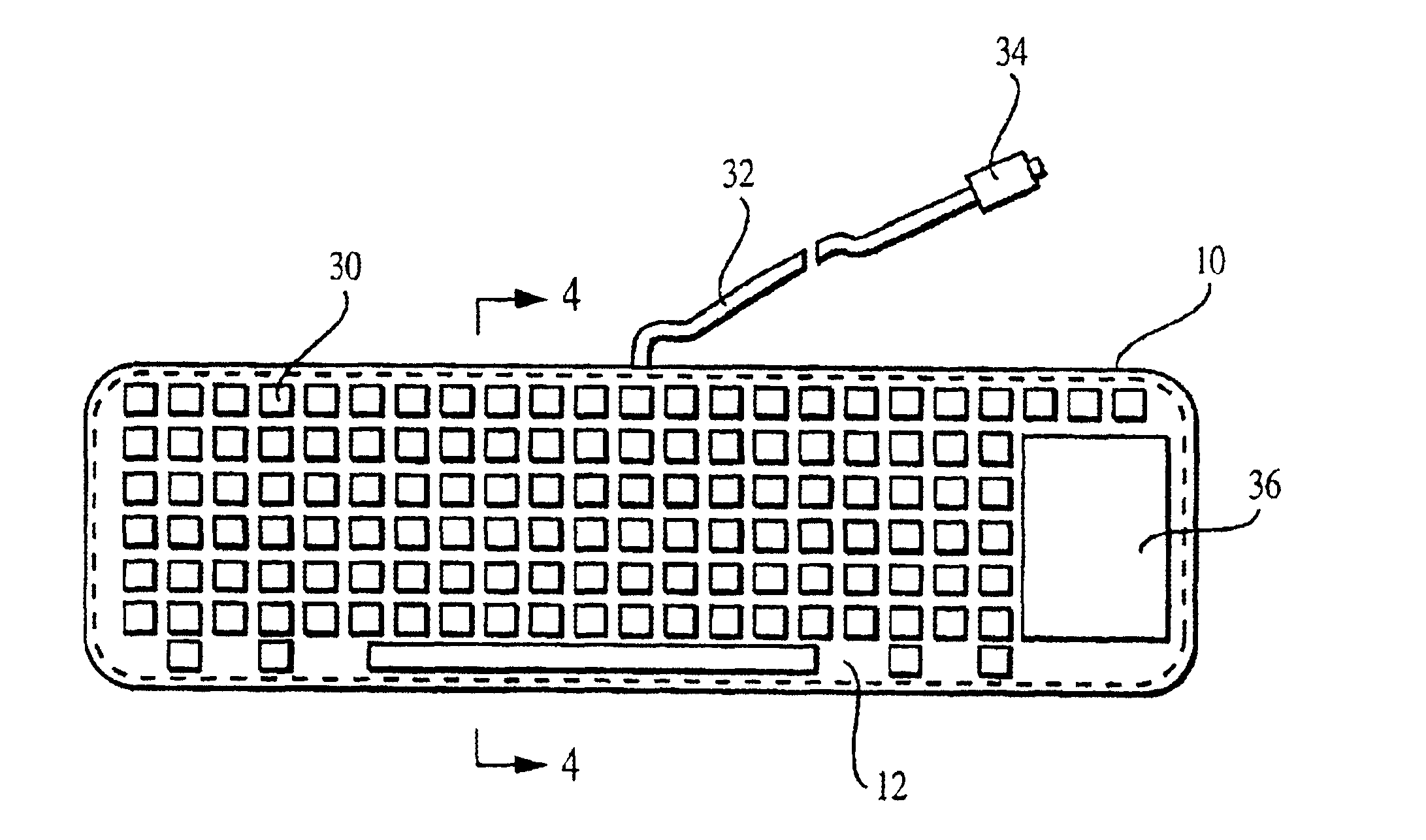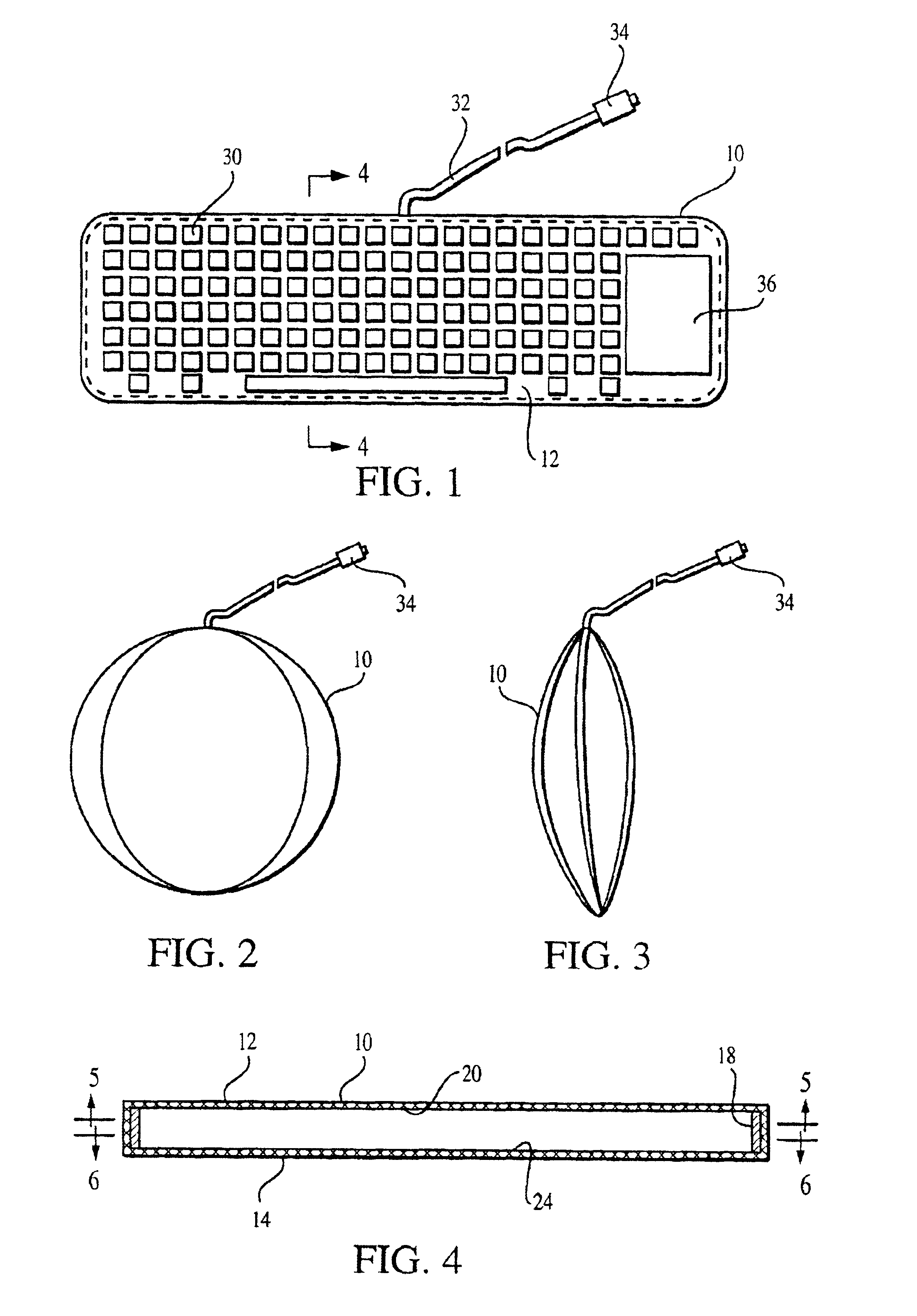Collapsible data entry panel
a data entry panel and collapsible technology, applied in the field of collapsible keyboards, can solve the problems of limiting the growth and market acceptance of many new electronic products, particularly portable devices, and the heavy weight of full-sized input devices that cannot keep pace with the shrinking size and weight of electronic hardwar
- Summary
- Abstract
- Description
- Claims
- Application Information
AI Technical Summary
Benefits of technology
Problems solved by technology
Method used
Image
Examples
second embodiment
the invention is shown in FIGS. 12-15. In the second embodiment, the reference numerals generally correspond to the first embodiment, but in the 100 series. A collapsible data entry panel 110 comprises an upper flexible layer of flexible sheet material 112, a lower layer of flexible sheet material 114, and intermediate layer of flexible sheet material 116, and a flexible frame 118 for holding the layers of sheet material in a substantially taut relationship. An inner surface 120 of the upper layer carries a conductive trace 122 and a plurality of contacts 123, as shown in FIG. 13. The inner surface 124 of the lower layer carries a conductive trace 126 with corresponding contacts 127, as shown in FIG. 15. The intermediate layer 116 has a pattern of holes 28 that correspond respectively to the contacts in the upper and lower traces. The upper layer of sheet material 112 has keys 130 or other indicia on its outer surface, which likewise correspond to the contacts 123 and 127. The trace...
PUM
 Login to View More
Login to View More Abstract
Description
Claims
Application Information
 Login to View More
Login to View More - R&D Engineer
- R&D Manager
- IP Professional
- Industry Leading Data Capabilities
- Powerful AI technology
- Patent DNA Extraction
Browse by: Latest US Patents, China's latest patents, Technical Efficacy Thesaurus, Application Domain, Technology Topic, Popular Technical Reports.
© 2024 PatSnap. All rights reserved.Legal|Privacy policy|Modern Slavery Act Transparency Statement|Sitemap|About US| Contact US: help@patsnap.com










